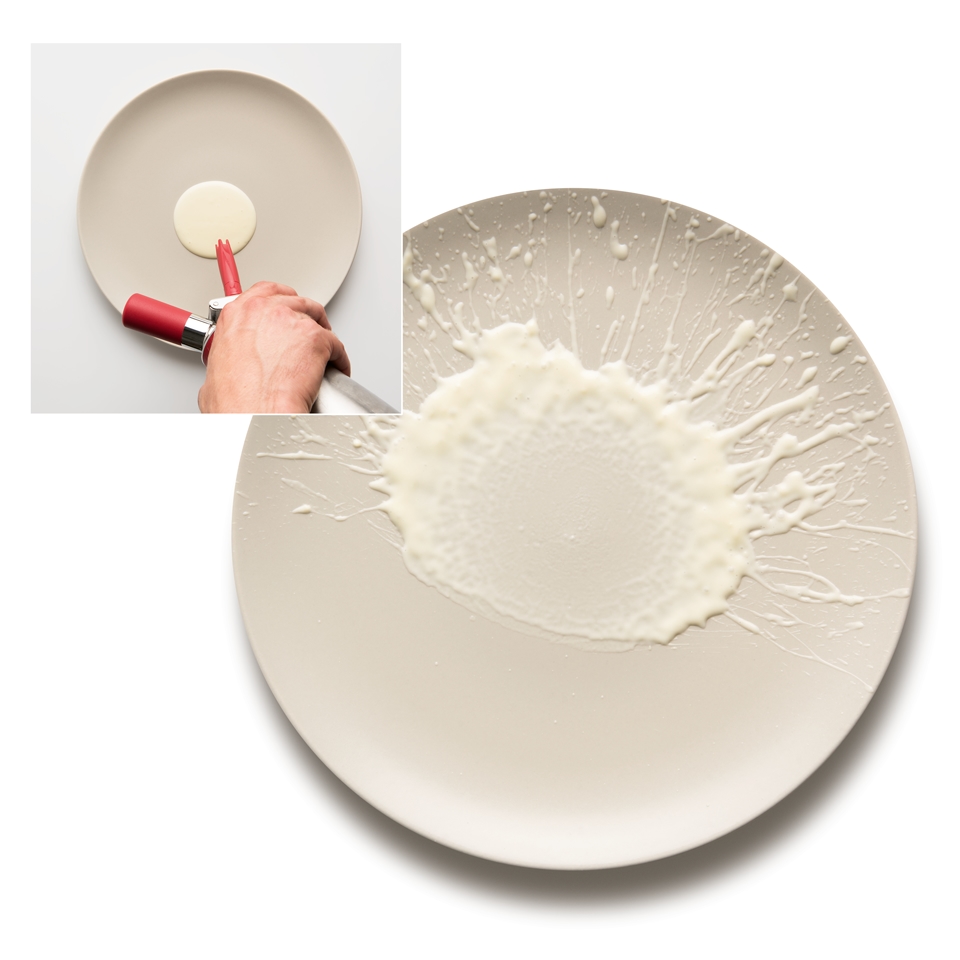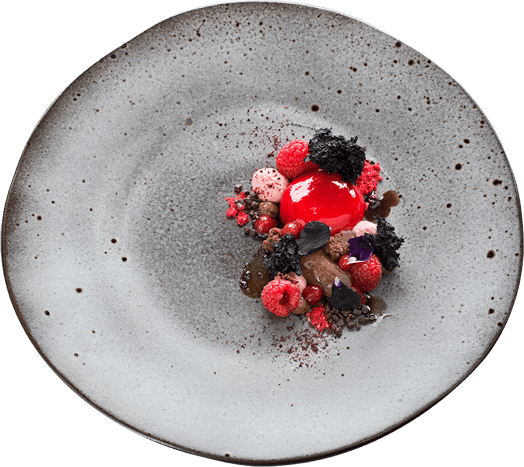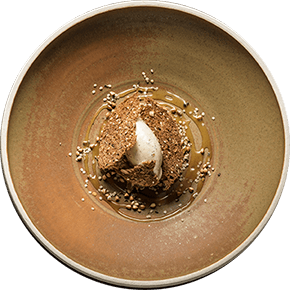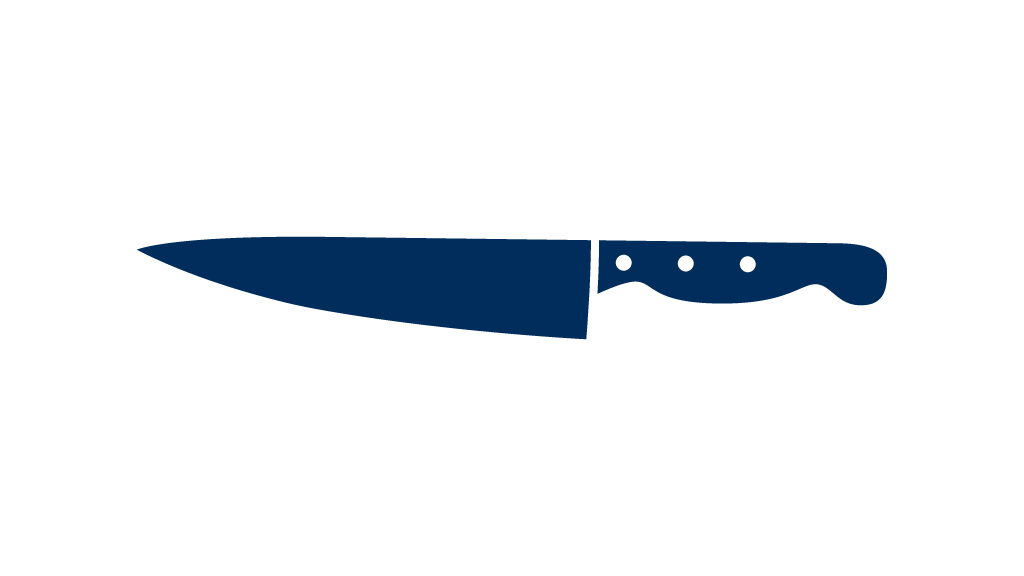Food plating
Today there are still leading chefs who consistently manage to surprise and inspire diners with their philosophies and the dishes they create. Particularly since the advent of social media, so much is being shared that it is almost impossible to keep up. The day after ChefsTalk, CookNiche or GastroArt publish a spectacular new form of presentation on Instagram, it pops up everywhere. The question that all these posts and photographs do not answer, however, is: how do you make it? We would like to shed light on some of the principles behind food plating and show you how to present your sauces in numerous attractive ways.


Spoon plenty sauce or purée on the plate and use a brush to draw a nice line.

Take a spoonful of sauce or purée and quickly draw a line on the plate. Horizontally, vertically or diagonally.

Place the plate on a rotating tray, give it a spin and pipe on the sauce while moving slowly from the centre towards the edge.

Apply masking tape across the plate, spoon on the required amount of sauce to one side of the tape and then tip up the plate to create the drips. Remove the tape.

Create drops of different sizes side by side on the plate.

Press the underside of a clean glass in a drop of sauce for a nice artistic effect on the plate.

Fill a spoonful with sauce and make a quick downward motion, so the sauce splashes on the plate.

Fill the caviar maker with sauce, put it on the plate and squeeze out the sauce.

Place the stencil on the plate and iron the sauce or puree over it with a palette knife. Then carefully lift the stencil.

Spoon the required amount of sauce onto the plate. Place a nitrous oxide cartridge in an empty whipping-cream canister and spray the sauce so it splatters!

Fill the sauce spoon and place on the plate. Make a drop and draw to a line. With the tip of the spoon you can also make small dots.

Put these plating techniques to the test when trying out one of our many recipes!
Discover our recipes




